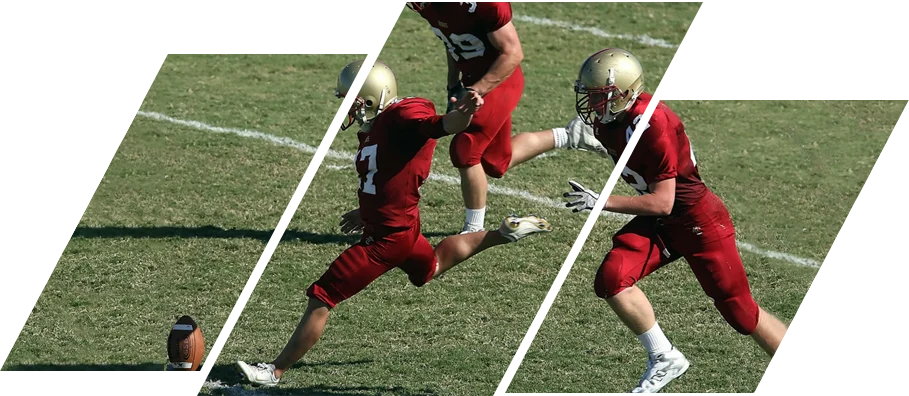Improving athlete performances & training plans
When it comes to improving athlete performances there is no magic button, sports analysis being the possible exception?
Nothing beats the consistency of a well thought out training plan! If you want to improve fitness levels and get the best from your athletes, a good place to start is to have an understanding of each athlete based on their personal performance metrics. Designing a training plan based on personalised performance metrics maximises their training gains.
This is why elite clubs all over the world use sports analysis software.
We are all different, our training should reflect this
The position team members play in their sport can be a good guideline as to their training; but this is not the whole picture. As we see in sports like rugby; some forwards are able to sprint faster than the backs even though they are, generally, bigger bodied. Athlete’s heart rates can differ massively and some can be more prone to injury than others, so why would their training not take these differences into consideration?
One way to understand the training loads that work for an athlete is to record their performance metrics and chart this information in graphs over a period of time creating a map their fitness gains. It’s hard to argue with the personalised facts and figures calculated for individual athlete’s using sports analysis software!
Facts, figures and emotions
Once we have a passport of an athlete’s training over a period of time, we are able to spot unpredictable drops in performance and fitness. If the training loads have been steady, and have been working well for the athlete, any drops or lulls maybe outside the sporting arena and more to do with their emotional well being. Comparing metrics from training sessions and matches enables us to note possible “outside” influences; trouble at home or at work for instance.
Using charts to plot performances gives us easy to read facts and figures and makes it very easy to see how athletes are performing and responding to changes in both their personal life and training.
If an athlete is to perform to the best of their ability their emotional well being is as important as their physical well being.
Improve your team's performance
Get insights, get winning
Sign up now and get started
What are performance metrics?
Performance metrics are comprised of personal data recorded about an athlete during matches and training sessions. These metrics might include: heart rate information, fastest running speed, distance covered, acceleration and deceleration.
From these metrics we can calculate helpful statistics like heart rate intensity, usually based on the percentage of the athlete’s maximum heart rate. This is a good starting metric that enables us to see how hard the athlete worked based on their own fitness level.
If we divide fastest running speeds into bands, we are able to see how much time the athlete spent in the higher speed bands; this is another indicator of how hard our athlete worked, once again based on their own abilities.
If we combine body weight, deceleration and the speed the athlete was running before decelerating, we can start to build a picture of efforts made and also see signs of fatigue and predict possible injury.
An example of this might be a football player who accelerates to their maximum speed and then very quickly decelerates and changes direction; if we take into consideration the body weight of the footballer, the speed they are running at and the strain on the quad muscles and knee joints to perform this manoeuvre, we can calculate the “load” effort.
If we have recorded metrics showing this information we may well train the footballer to ease their pace at a slower rate, therefore preventing knee injuries and cartilage problems.
How are performance metrics recorded?
There are many methods used to accurately record performance metrics; most involve wearing a GPS type device and a heart rate monitor. Usually the data recorded is loaded into analysis software that calculates the required metrics and this is usually based on the athlete’s personal profile.
Amateur sports people can wear GPS watches and heart rate straps and can load their data into software provided by the watch manufacturer, although very helpful this information is inaccurate and does not produce the metrics needed for more profession athletes.
Conclusion
This article is a very short overview describing the use of training insights based on performance metrics and how this data can be used to optimise training and performance. These techniques can become incredibly complicated and in-depth depending on the analyst and the required metrics. If you would like more information on analysis in sports please visit the iSportsAnalysis blog.
You can also find out more information about the iSportsAnalysis “Athlete Performance Pro” system. We use GPS and heart rate information to produce over 100 metrics based on an athlete’s training and match performance.
Thank you for reading.

Anadi James Taylor
CEO - iSportsAnalysis Ltd
I am expert in helping sports clubs and universities with their Sports Video Analysis and their GPS Performance Analysis.
I developed iSportsAnalysis.com with top sports scientists, coaches and trainers to help maximise training gains and to optimise the performance of athletes and teams.
I have developed an online system that has helped over 120 universities, private schools and clubs to reach their true sporting potential; whether that has been from them using the online video streaming services, the online sports video analysis or the GPS performance analysis, the results speak for themselves!
We help you win matches!
You can find out more at iSportsAnalysis.com.

